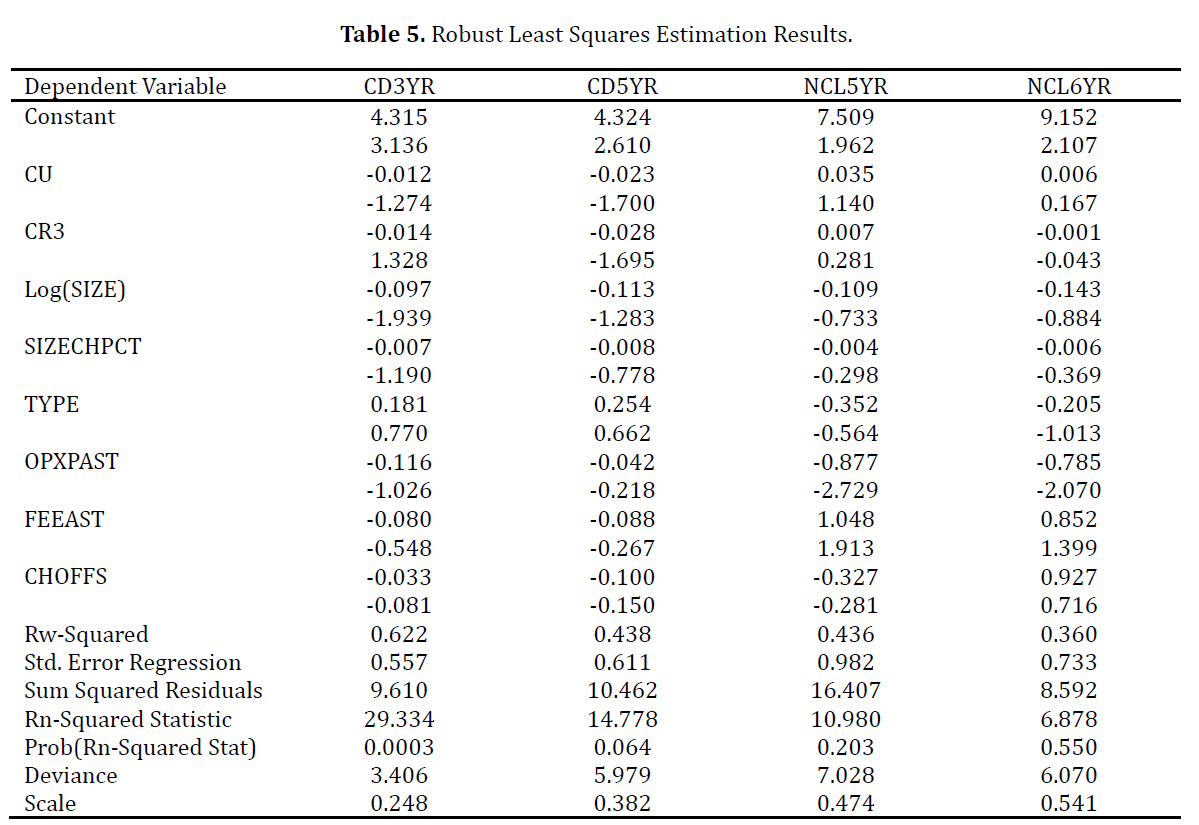Does Rocky Mountain Credit Union Competition still Affect Commercial Bank Interest Rates?
Abstract
Historically, increased credit union competition in Idaho and Montana has caused commercial banks to offer higher deposit rates to savers and lower loan rates to borrowers. Data are collected for the second quarter of 2018 to examine whether that pattern still holds true. Unlike prior studies, empirical results indicate that credit union competition no longer exerts statistically reliable impacts on deposit rates or loan rates in this northern Rocky Mountain region of the United States. Potential contributing factors include bank and thrift consolidation in recent years, the low interest rate environment prevailing during the late 2010s, and greater emphasis on non-interest forms of intermediary competition in the banking markets that comprise this regional economy.
Cite This Paper
Fullerton, T. M., Tokle, R. J., Jones, B., & Fullerton, S. L. (2023). Does Rocky Mountain Credit Union Competition still Affect Commercial Bank Interest Rates?. Journal of Regional Economics, 2(1), 9. doi:10.58567/jre02010004
Fullerton, T. M.; Tokle, R. J.; Jones, B.; Fullerton, S. L. Does Rocky Mountain Credit Union Competition still Affect Commercial Bank Interest Rates?. Journal of Regional Economics, 2023, 2, 9. doi:10.58567/jre02010004
Fullerton T M, Tokle R J, Jones B et al.. Does Rocky Mountain Credit Union Competition still Affect Commercial Bank Interest Rates?. Journal of Regional Economics; 2023, 2(1):9. doi:10.58567/jre02010004
Fullerton, Thomas M.; Tokle, Robert J.; Jones, Bryce; Fullerton, Steven L. 2023. "Does Rocky Mountain Credit Union Competition still Affect Commercial Bank Interest Rates?" Journal of Regional Economics 2, no.1:9. doi:10.58567/jre02010004
Show Figures
Share and Cite
Article Metrics
References
- Anderson, Richard G., and Yang Liu. (2013). “Banks and Credit Unions: Competition Not Going Away.” Federal Reserve Bank of St. Louis Regional Economist 21 (2), 4-9.
- Barret, Richard, and Kay Unger. (1991). “Capital Scarcity and Banking Industry Structure in Montana.” Growth and Change 22 (2), 48–57. https://doi.org/10.1111/j.1468-2257.1991.tb00547.x
- Cohen, Andrew M., and Michael J. Mazzeo. (2007). “Market Structure and Competition among Retail Depository Institutions.” Review of Economic and Statistics 89 (1), 6-74. https://doi.org/10.17016/FEDS.2004.04
- Connolly, Robert A. 1989. “An Examination of the Robustness of the Weekend Effect.” Journal of Financial & Quantitative Analysis 24 (2), 133-169. https://doi.org/10.2307/2330769
- CUNA. (2021). U.S. Credit Union Profile (First Quarter). Madison, WI: Credit Union National Association.
- Emmons, W.R. and Schmid, F.A. 2000. “Bank Competition and Concentration: Do Credit Unions Matter?” Federal Reserve Bank of St. Louis Review 82 (3), 29-42. https://doi.org/10.20955/r.82.29-42
- Evans, David S., and Bernard Shull. (1998). Economic Role of Credit Unions in Consumer Banking Markets. Cambridge, MA: National Economic Research Associates.
- FDIC. (2018). Bank Data & Statistics. Washington, DC: Federal Deposit Insurance Corporation.
- Feinberg, Robert M. 2001. “The Competitive Role of Credit Unions in Small Local Financial Services Markets.” Review of Economics and Statistics 83 (3), 560-563. https://doi.org/10.1162/00346530152480207
- Feinberg, Robert M. 2003. “The Determinants of Bank Rates in Local Consumer Lending Markets: Comparing Market- and Institution-Level Results,” Southern Economic Journal 70 (1), 144-156. https://doi.org/10.2307/1061636
- Feinberg, Robert M. and Douglas Meade. (2017). Economic Benefits of the Credit Union Tax Exemption to Consumers, Businesses, and the U.S. Economy. Arlington, VA: National Association of Federally Insured Credit Unions.
- Feinberg, Robert M. and Ataur Rahman. 2006. “Are Credit Unions Just Small Banks? Determinants of Loan Rates in Local Consumer Lending Markets,” Eastern Economic Journal 32 (4), 647-659.
- FRED (2019). Commercial Banks in the U.S. St. Louis, MO: Federal Reserve Bank of St. Louis Economic Data.
- Hannan, Timothy H. (1984). “Competition between Commercial Banks and Thrift Institutions: An Empirical Examination.” Journal of Bank Research. 15 (Spring), 8–14. https://doi.org/10.1007/BF00365552
- Hannan, Timothy H. (2002). The Impact of Credit Unions on the Rates Offered for Retail Deposits by Banks and Thrifts Institutions (Finance & Economics Discussion Series 2003-6). Washington, DC: Board of Governors of the Federal Reserve System.
- Hannan, Timothy H., and J. Nellie Liang. (1995). “The Influence of Thrift Competition on Bank Business Loan Rates.” Journal of Financial Services Research 9 (2), 107–122. https://doi.org/10.1007/BF01068073
- Hannan, Timothy H., and Robin A. Prager. (2004). “The Competitive Implications of Multimarket Bank Branching.” Journal of Banking & Finance 28 (8), 107–122. https://doi.org/10.2139/ssrn.293104
- Luntz, Frank. (1998). “Special Message to the U.S. Congress.” Credit Union News Watch (27 April), 3–4.
- Machlup, Fritz. 1974.” Proxies and Dummies.” Journal of Political Economy 82 (4), 892.
- Mishkin, Fredric S. (1998). The Economics of Money, Banking and Financial Markets. New York, NY: Addison-Wesley Longman.
- Mishkin, Fredric S. (2019). The Economics of Money, Banking and Financial Markets. New York, NY: Addison-Wesley Longman. https://www.pearsonhighered.com/assets/preface/0/1/3/4/0134855388.pdf
- NCUA. (2018). Credit Union and Bank Rates 2018 Q2. Washington, DC: National Credit Union Administration.
- RW. 2018. Depository and Loan Rates for Banks and Credit Unions in Idaho and Montana. Fort Atkinson, WI: RateWatch.
- Tokle, Robert J. (2005). “The Influence of Credit Unions on Bank CD Rate Payments in the U.S.” New York Economic Review 36, 57-64. https://doi.org/10.1016/j.frl.2022.103005
- Tokle, Robert J., and Joanne G. Tokle. (2000). “The Influence of Credit Union and Savings and Loan Competition on Bank Rates in Idaho and Montana.” Review of Industrial Organization 17 (4), 427-439. https://doi.org/10.1023/A:1007894216526
- Tokle, Joanne G., and Robert J. Tokle. (2002). “Factors Determining Credit Union Loan Rates in Local Markets.” New York Economic Review 33, 52-60.
- Tokle, Robert J. and Joanne G. Tokle. (2008). “The Effect of Capital Ratios on Credit Union Rates Nationwide.” New York Economic Review 39, 85-93.
- Tokle, Robert J. and Joanne Tokle. (2010). “Credit Union Growth in Mid-Sized Markets.” New York Economic Review 41, 45-56. https://nyecon.net/nysea/publications/nyer/2010/NYER_2010_p045.pdf
- USCB (2018). 2017 City/Town Population and Housing Unit Estimates. Washington, DC: U.S. Census Bureau.
- USDT (1997). Credit Unions. Washington, DC: U.S. Department of Treasury.

